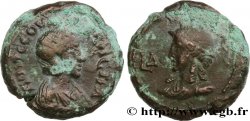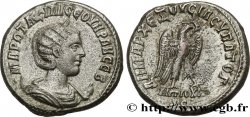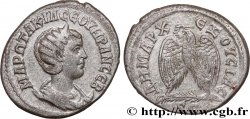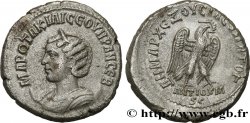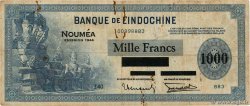E-auction 165-101750 - bpv_154040 - OTACILIA SEVERA Tétradrachme syro-phénicien
Sie müssen angeschlossen sein und von cgb.fr genehmigt werden, um in einer E-Auktion teilzunehmen.Melden Sie sich an, um zu wetten..Die Kontobestätigungen sind innerhalb von 48 Stunden nach Ihrer Anmeldung gemacht.Warten Sie nicht bis die letzten zwei Tage vor dem Abschluss eines Verkaufs, um Ihre Registrierung abzuschließen. Klickend "BIETEN" verpflichten Sie sich vertraglich, diesen Artikel zu kaufen und Sie nehmen ohne Reserve die allgemeinen Verkaufsbedingungen für den e-auctions zu cgb.fr an.
Der Verkauf wird an der Zeit auf der Übersichtsseite angezeigt geschlossen werden. Angebote, die nach der Schließung Zeit empfangen sind, werden nicht gültig.
Bitte beachten Sie, dass die Fristen für die Einreichung Ihres Angebots auf unsere Server können variieren und es kann zur Ablehnung Ihres Angebots entstehen, wenn es in den letzten Sekunden des Verkaufs gesendet wird. Die Angebote sollen mit ganzer Zahl ausgeführt sein, Sie können Kommas oder des Punktes in Ihrem Angebot nicht erfassen. Bei Fragen klicken Sie hier, um einen Blick auf die FAQ E-Auktionen.
KEINE ANSCHAFFUNGSKOSTEN FÜR DIE KÄUFER.
KEINE ANSCHAFFUNGSKOSTEN FÜR DIE KÄUFER.
| Schätzung : | 190 € |
| Preis : | 57 € |
| Höchstgebot : | 60 € |
| Verkaufsende : | 13 Juni 2016 15:15:30 |
| Bieter : | 7 Bieter |
Type : Tétradrachme syro-phénicien
Datum: 248
Name der Münzstätte / Stadt : Antioche, Syrie, Séleucie et Piérie
Metall : Scheidemünze
Durchmesser : 28,00 mm
Stempelstellung : 12 h.
Gewicht : 12,18 g.
Seltenheitsgrad : R2
Kommentare zum Erhaltungszustand:
Frappe correctement centrée sur un flan régulier, faible usure mais surface légèrement piquée
N° im Nachschlagewerk :
Pedigree :
Cet exemplaire, qui provient de la trouvaille dite de Jordanie 1930, est le 0381_003 de la base TSP
Vorderseite
Beschreibung Vorderseite Buste drapé et diadémé d’Otacilia Sévéra à gauche, les cheveux remontés en tresse sur la tête, posé sur un croissant de lune, vu de trois quarts en avant (L16).
Legende des Averses MAR WTAKIL SEOUHRAN SEB
Übersetzung der Vorderseite (Marcia Otacilia Severa augusta).
Rückseite
Titulatur der Rückseite ANTIOXIA / S|C À L’EXERGUE.
Beschreibung Rückseite Aigle debout à gauche, les ailes déployées, tête et queue à droite, tenant une couronne feuillée dans son bec.
Legende des Reverses : DHMARC - EX OUSIAS UPATOG
Übersetzung der Rückseite (Revêtu de la puissance tribunitienne / Consul pour la troisième fois / avec l’accord du Sénat d’Antioche).
Kommentare
Les frappes de Philippe II datées du troisième consulat, comme celles d’Otacilie Sévère d’ailleurs, portent les titres de Philippe Père. Elles se distinguent entre elles par différents aigles de revers et un portrait à droite ou à gauche.
Il faut noter que si Philippe affectionne particulièrement la couronne radiée solaire dans ses frappes de tétradrachmes (sans que cela ait la moindre influence sur la valeur faciale de la monnaie, contrairement à ce qui se produit pour les antoniniens), tous les bustes de son épouse sont posés sur un croissant lunaire.
En abordant les frappes du 3e consulat, on remarque l’absence complète de frappes datées du deuxième consulat, bien que le deuxième consulat de Philippe et de sa famille existe indubitablement à Rome, y compris sur les émissions monétaires. Interruption des frappes ou comput différent à Antioche qu’à Rome ? Nous penchons pour la deuxième solution, pour deux raisons.
Tout d’abord la continuité stylistique : tant pour les revers que pour les droits, il n’y a pas de rupture, alors que l’on aurait pu présumer une certaine normalisation après une interruption des frappes. De plus, celle-ci se produira effectivement pour les frappes datées du quatrième consulat avec un style d’aigle unique, suivie à la fin par une nouveauté encore plus marquante, l’introduction d’officines indiquées sur les monnaies.
Ensuite, il existe à Antioche de très nombreuses frappes datées d’un quatrième consulat de Philippe l’Arabe dont nous ne trouvons pas trace à Rome. Il est extrêmement regrettable que les quelques informations dont nous disposons sur le Sénat d’Antioche soient largement plus tardives (4e et 5e siècle) car les émissions de tétradrachmes laissent à penser que non seulement le Sénat d’Antioche manifestait son indépendance envers Rome en frappant de l’argent avec la titulature “SC / ANTIOXIA” mais encore qu’il avait son propre comput impérial sous Philippe.
L’apparition de cette exergue et la disparition de la palme sont caractéristiques des 3e et 4e consulat mais les styles des aigles ne se normaliseront qu’au 4e.
On note que les sigma sont gravés en C.
Dans la base TSP maintenue par Michel Prieur, quatorze exemplaires sont maintenant répertoriés pour ce type, deux en musées à Oxford et Gaziantep.
The coins of Philip II dated from the third consulate, like those of Otacilia Severus, bear the titles of Philip the Father. They are distinguished from each other by different reverse eagles and a portrait on the right or left.
It should be noted that while Philip was particularly fond of the radiating solar crown in his tetradrachm strikes (without this having the slightest influence on the face value of the coin, unlike what happens with the antoninianus), all the busts of his wife are placed on a lunar crescent..
When approaching the strikes of the 3rd consulate, we notice the complete absence of strikes dated from the second consulate, although the second consulate of Philip and his family undoubtedly existed in Rome, including on monetary issues.. Was the minting interrupted or was the calculation different in Antioch than in Rome? We are inclined to choose the second solution, for two reasons..
First of all, stylistic continuity: for both the backhands and the forehands, there is no break, whereas one might have assumed a certain standardization after an interruption in the strokes. Furthermore, this will actually occur for the strikes dated from the fourth consulate with a unique eagle style, followed at the end by an even more striking novelty, the introduction of offices indicated on the coins..
Then, in Antioch there are many strikes dated to a fourth consulate of Philip the Arab, of which we find no trace in Rome.. It is extremely regrettable that the little information we have on the Senate of Antioch is much later (4th and 5th century) because the issues of tetradrachms suggest that not only did the Senate of Antioch demonstrate its independence from Rome by minting coin with the title “SC / ANTIOXIA” but also that it had its own imperial computus under Philip.
The appearance of this exergue and the disappearance of the palm are characteristic of the 3rd and 4th consulate but the styles of the eagles will not become standardized until the 4th.
Note that the sigmas are engraved in C.
In the TSP database maintained by Michel Prieur, fourteen examples are now listed for this type, two in museums in Oxford and Gaziantep
Il faut noter que si Philippe affectionne particulièrement la couronne radiée solaire dans ses frappes de tétradrachmes (sans que cela ait la moindre influence sur la valeur faciale de la monnaie, contrairement à ce qui se produit pour les antoniniens), tous les bustes de son épouse sont posés sur un croissant lunaire.
En abordant les frappes du 3e consulat, on remarque l’absence complète de frappes datées du deuxième consulat, bien que le deuxième consulat de Philippe et de sa famille existe indubitablement à Rome, y compris sur les émissions monétaires. Interruption des frappes ou comput différent à Antioche qu’à Rome ? Nous penchons pour la deuxième solution, pour deux raisons.
Tout d’abord la continuité stylistique : tant pour les revers que pour les droits, il n’y a pas de rupture, alors que l’on aurait pu présumer une certaine normalisation après une interruption des frappes. De plus, celle-ci se produira effectivement pour les frappes datées du quatrième consulat avec un style d’aigle unique, suivie à la fin par une nouveauté encore plus marquante, l’introduction d’officines indiquées sur les monnaies.
Ensuite, il existe à Antioche de très nombreuses frappes datées d’un quatrième consulat de Philippe l’Arabe dont nous ne trouvons pas trace à Rome. Il est extrêmement regrettable que les quelques informations dont nous disposons sur le Sénat d’Antioche soient largement plus tardives (4e et 5e siècle) car les émissions de tétradrachmes laissent à penser que non seulement le Sénat d’Antioche manifestait son indépendance envers Rome en frappant de l’argent avec la titulature “SC / ANTIOXIA” mais encore qu’il avait son propre comput impérial sous Philippe.
L’apparition de cette exergue et la disparition de la palme sont caractéristiques des 3e et 4e consulat mais les styles des aigles ne se normaliseront qu’au 4e.
On note que les sigma sont gravés en C.
Dans la base TSP maintenue par Michel Prieur, quatorze exemplaires sont maintenant répertoriés pour ce type, deux en musées à Oxford et Gaziantep.
The coins of Philip II dated from the third consulate, like those of Otacilia Severus, bear the titles of Philip the Father. They are distinguished from each other by different reverse eagles and a portrait on the right or left.
It should be noted that while Philip was particularly fond of the radiating solar crown in his tetradrachm strikes (without this having the slightest influence on the face value of the coin, unlike what happens with the antoninianus), all the busts of his wife are placed on a lunar crescent..
When approaching the strikes of the 3rd consulate, we notice the complete absence of strikes dated from the second consulate, although the second consulate of Philip and his family undoubtedly existed in Rome, including on monetary issues.. Was the minting interrupted or was the calculation different in Antioch than in Rome? We are inclined to choose the second solution, for two reasons..
First of all, stylistic continuity: for both the backhands and the forehands, there is no break, whereas one might have assumed a certain standardization after an interruption in the strokes. Furthermore, this will actually occur for the strikes dated from the fourth consulate with a unique eagle style, followed at the end by an even more striking novelty, the introduction of offices indicated on the coins..
Then, in Antioch there are many strikes dated to a fourth consulate of Philip the Arab, of which we find no trace in Rome.. It is extremely regrettable that the little information we have on the Senate of Antioch is much later (4th and 5th century) because the issues of tetradrachms suggest that not only did the Senate of Antioch demonstrate its independence from Rome by minting coin with the title “SC / ANTIOXIA” but also that it had its own imperial computus under Philip.
The appearance of this exergue and the disappearance of the palm are characteristic of the 3rd and 4th consulate but the styles of the eagles will not become standardized until the 4th.
Note that the sigmas are engraved in C.
In the TSP database maintained by Michel Prieur, fourteen examples are now listed for this type, two in museums in Oxford and Gaziantep







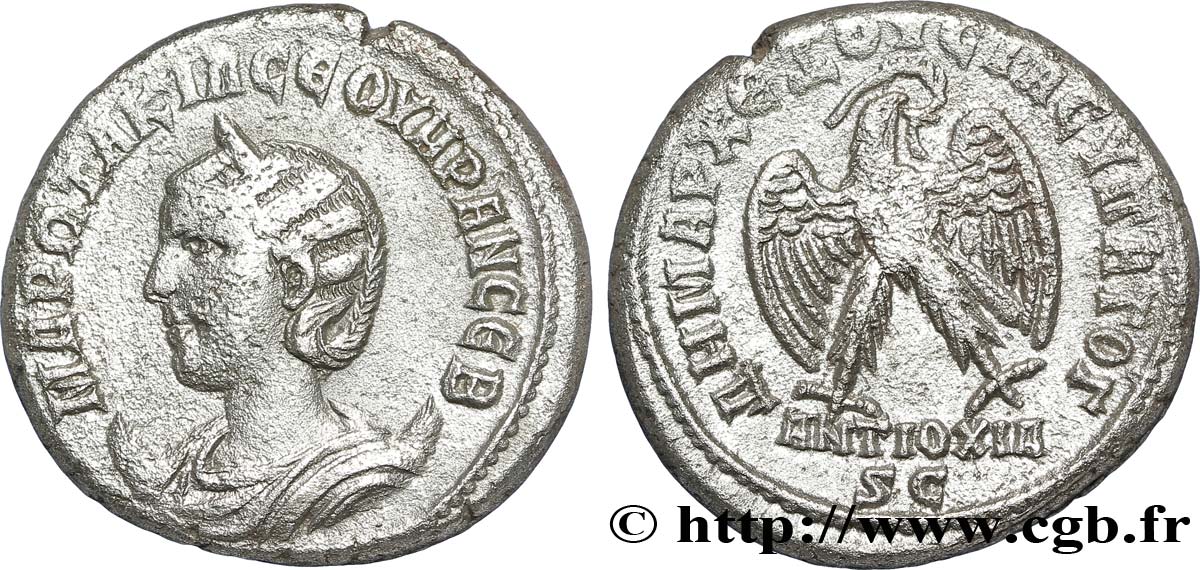
 Berichten über einen Fehler
Berichten über einen Fehler Die Seite drucken
Die Seite drucken Teilen meiner Auswahl
Teilen meiner Auswahl Stellen Sie eine Frage
Stellen Sie eine Frage Einlieferung/Verkauf
Einlieferung/Verkauf
 Details
Details